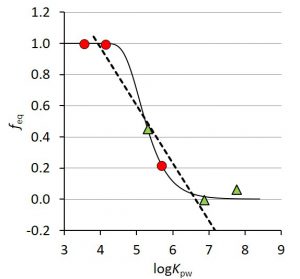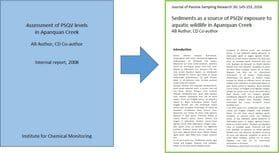Contents
1. How can we help?
PaSOC supports passive sampling based monitoring, from study design to publication of results, based on the best available science. Support includes the selection of sampler types and calibration parameters, data modeling, quality control, and reporting. PaSOC strives to maximize knowledge transfer to its customers.
PaSOC provides the following services:
2. Thirty minutes free support
This is for shorter questions regarding passive sampling. Feel free to discuss these by phone or e-mail. 30 min is an indication; we do not use a stop watch.
3. Cw calculations

When you do not have the time to dive into the modeling of passive sampling data to calculate aqueous concentrations: we can do it for you; fast, accurate, and in line with current understanding. We also can provide tailor-made calculation templates, including the estimation of uncertainties. There are many modeling approaches around, with specific pros and cons, and specific application ranges. We can support you in making the optimal choice for your study.
4. Data analysis / data rescue
If you have large or small data sets from passive sampling studies sitting in your computer, but are short of processing time, then send them to us: we love to squeeze all information possible from such data sets.
Sometimes you do not get the data that you expected, and you end up with results that are difficult to interpret. We can analyze such data and often can identify remedial measures. Sometimes, apparently confusing data make perfect sense after further interpretation or reprocessing.
5. Monitoring studies

Successful implementation of passive sampling in environmental monitoring involves the optimization of many steps: study design, exposure, chemical analysis, data processing. For example, the selected sampler type should have sufficiently accurate calibration parameters for the compounds of interest. Chemical analysis methods should be compatible with the selected passive sampling method, and the best available uptake models should be selected for the data processing.
We can give scientific support to all aspects of passive sampling based monitoring studies, particularly for the design and data processing stages. Because of our contacts with commercial laboratories and environmental consultancy companies around the world, we can also give advise on the selection of trustworthy partners that can carry out sampling campaigns and chemical analysis.
6. Second opinions
We can evaluate passive sampling based environmental assessments in case you need an independent check if such studies are in accordance with the state of the knowledge. Possible aspects include the validity of the design, analysis, and data processing of such studies, including uncertainty estimation, whichever is needed.
7. Literature surveys
We can carry out literature studies for summarizing the state of the knowledge with respect to passive sampling of (groups of) compounds.
8. Report to article conversion

It often happens that an internal report is finalized, with the intention of submitting its content to a scientific journal. But then, other projects come up, which absorb all of you time. Sound familiar? We can condense and restructure your internal report for journal submission.
There can be ethical issues involved here, related to transparency of intellectual property. If our processing of your report is purely technical, then we need not be included in the author list, because such processing does not add new insights to the manuscript. When we feel that enhanced data processing and interpretation is possible, we will propose to include this. If you agree, we will be included in the author list. If not, the reprocessing will remain technical in nature.
9. Hydrodynamical calibration
The uptake kinetics of organic compounds between passive samplers and water is often partly or completely governed by transport through the water boundary layer (WBL) near the sampler-water interface. Transport through the WBL can be conveniently expressed by a mass transfer coefficient. We offer mass transfer sensors that are based on dissolution rates of flat alabaster plates, which allow direct experimental determination of mass transfer coefficients. These sensors may be helpful in cases where exchange rate calibrations with performance reference compounds is not feasible, for example in the case of passive samplers for polar organic compounds. More information on the water boundary layer resistance page.